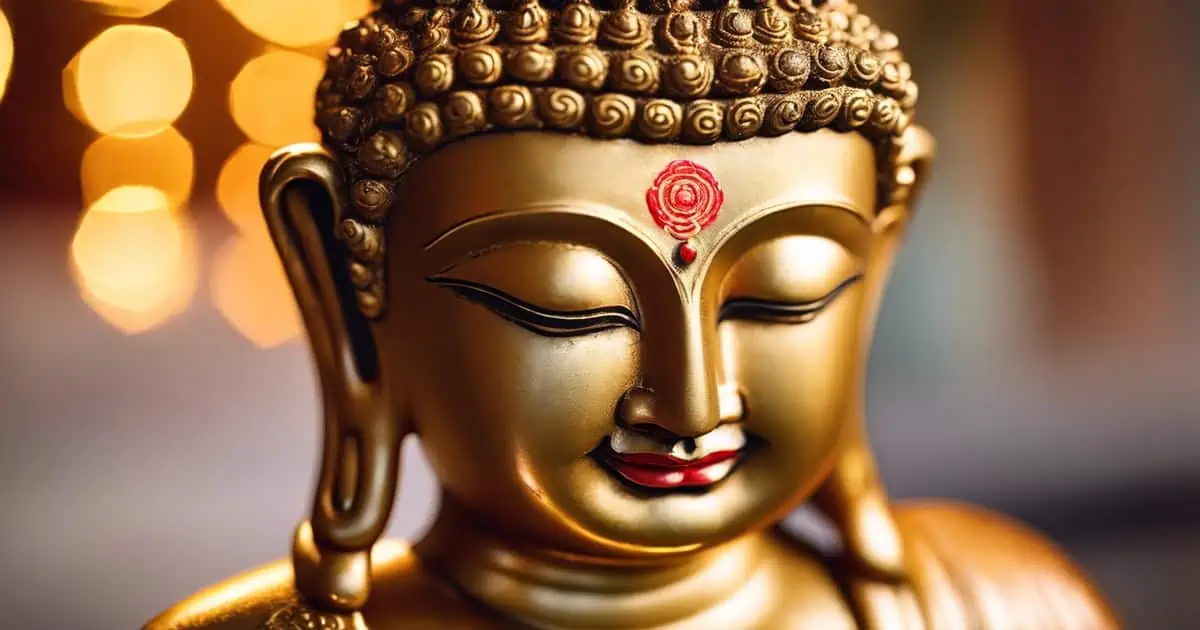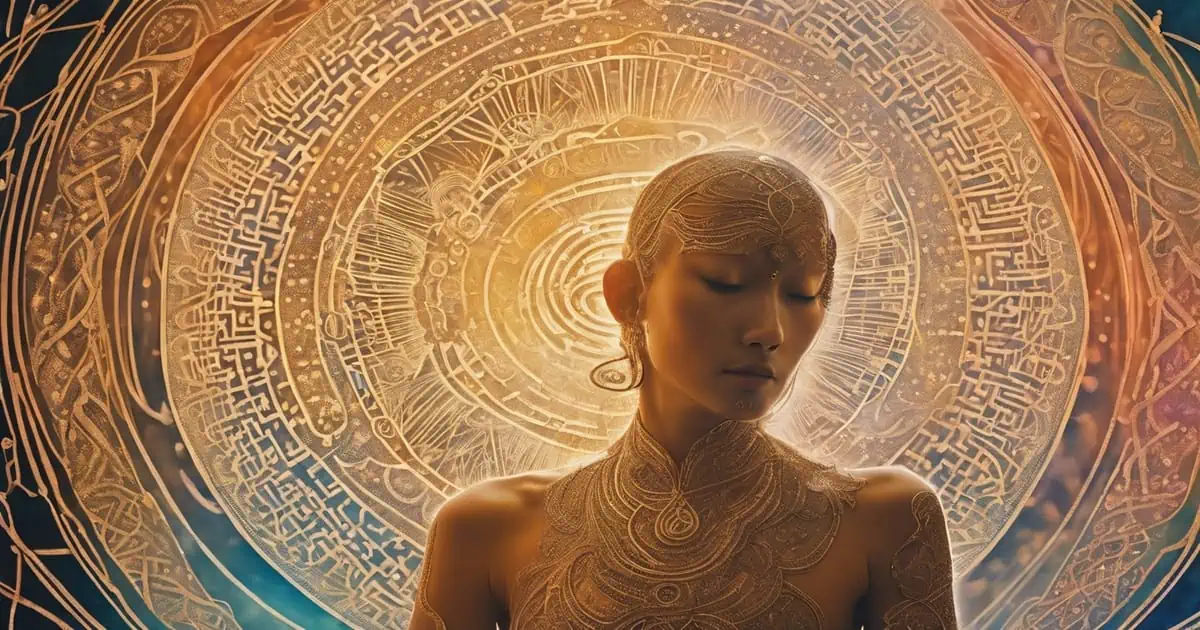When I embarked on my yoga journey, my aim was to liberate myself from negative emotions, physical discomfort, and mental unrest and discover inner tranquility. As I delved deeper into this transformative practice, I realized that the pursuit of solace from the inherent afflictions of human existence is the foundation of the spiritual odyssey of yoga.
Yoga empowers us to break free from the endless cycles of suffering. The ultimate goal of a yogi is to transcend samsara, the perpetual cycle of birth, death, and rebirth, and attain liberation from suffering.
Contents
- 1 What is the Concept of Samsara?
- 2 Origins of the Samsara Concept
- 3 Samsara Meaning in Hinduism and Buddhism
- 4 Karma, Reincarnation, and Dharma Interconnection
- 5 Illusion: Maya, Avidya, and Samsara Meaning
- 6 Liberation from Samsara: The Quest for Moksha
- 7 Yoga’s Role in Navigating Samsara
- 8 Etymology of ‘Samsara’
- 9 Conclusion: Understanding Samsara’s Place in Life
- 10 FAQs
What is the Concept of Samsara?
The concept of saṃsāra, a fundamental tenet in Jainism, weaves a complex tapestry across various spiritual traditions, embodying the perpetual cycle of birth, death, and rebirth that frames human existence.
Saṃsāra’s significance reaches further than just philosophical reflections; it influences ethical living and moral decision-making by highlighting the repercussions that surpass individual lifetimes, intertwined with the cycle of reincarnation and the spiritual quest for liberation.
Origins of the Samsara Concept
The saṃsāra concept, deeply embedded in traditions, originates from ancient spiritual texts and has permeated through various South Asian philosophies, evolving significantly over time.
Ancient Religious Roots
Samsara’s story begins thousands of years ago. It’s woven into the fabric of several Eastern religions. Sacred writings from Hinduism, like the Vedas and Upanishads, first mentioned saṃsāra within their traditions.
These ancient texts, steeped in traditions and written in Sanskrit, are pivotal for grasping the concept of saṃsāra. They talk about a cycle of birth, life, death, and rebirth, known as saṃsāra, that every soul goes through in various traditions.
This idea, deeply rooted in traditions and the concept of saṃsāra, wasn’t just chilling in one place; it got around. Buddhism and Jainism gave some nods to samsara, too.
In fact, Siddhartha Gautama (the Buddha) was all about finding an escape route from the cycle of saṃsāra, central to many traditions. He taught that enlightenment was the key to exiting the saṃsāra, the endless loop, in line with ancient traditions.

Siddhartha Gautama: The Life of the Buddha: Based on Original Sources
See latest price
Samsara Meaning in Hinduism and Buddhism
Saṃsāra represents the cycle of rebirth in both Hinduism and Buddhism. While sharing common ground, each religion perceives saṃsāra differently, impacting their spiritual practices and ethical living.
Hinduism Vs. Buddhism
Hinduism views saṃsāra as a cycle of birth, death, and rebirth. It’s like being on a giant cosmic wheel of saṃsāra where life goes round and round. In this belief system, your actions (karma) determine your future lives within the cycle of saṃsāra. Do good things, and you’ll move up the ladder of saṃsāra; do bad stuff, and it’s a slide down.
Buddhism also believes in saṃsāra but with its own unique perspective. The Buddha taught that in the cycle of saṃsāra, there is no permanent self to be reborn. Instead, it’s more about patterns of energy, akin to the concept of saṃsāra, that keep moving forward. Think of it like passing the baton in a relay race – the race, much like saṃsāra, continues even though runners change.
Ethical Living Impact
Both religions agree that how we live matters big time because of the cycle of saṃsāra. Here’s how they see it:
- Hindu Ethics: Live righteously, create good karma, aim for moksha, and transcend the cycle of saṃsāra.
- Buddhist Ethics: Follow the Five Precepts (like ‘don’t harm others’), and practice meditation for insight into reality and understanding of saṃsāra.
These rules aren’t just about avoiding trouble; they’re stepping stones out of the endless loop of rebirths known as saṃsāra.
Spiritual Practices Influence
Spiritual practices are tools given by various religions to help us break free from the cycle of saṃsāra.
Hindu Practices:
- Yoga: Connects body and spirit to reach higher consciousness.
- Meditation: Focuses the brain on divine truths.
Buddhist Practices:
- Mindfulness: Staying aware to break attachment chains.
- Compassion cultivation: Encourages positive patterns that reduce suffering for all beings.
Karma, Reincarnation, and Dharma Interconnection
Karma influences our position in the cycle of samsara. Dharma offers a path to generate positive karma, affecting reincarnation.
Karma Drives Samsara
Karma is a cosmic scorecard that tallies our actions, both good and bad. Every choice we make creates a ripple effect that can span across lifetimes. Life is like an echo; what we put out into the world echoes back to us.
This concept isn’t just about punishment; it’s also about learning and growth. Tough lessons can be learned from bad karma, while blessings can result from good deeds. For example, selflessly helping someone can bring goodness back to us.
Reincarnation’s Mechanism
Your past actions are reflected in your current life, and your present choices shape your future. Life is like a book, with each chapter building on the last. Death is not an end but rather a transition to a new beginning.
This cycle continues until enlightenment, moksha, or nirvana is achieved. Remember, every moment is an opportunity to create a better future for yourself and those around you.
Dharma Guides Positively
Let this philosophy be your guiding light, leading you toward a virtuous and fulfilling life. It’s not just about religion or spirituality, but practical everyday living advice that helps you fulfill your responsibilities and accumulate positive karma.
Upholding this teaching looks different for everyone, depending on their role in life, but it always involves being kind and honest. By consistently adhering to these principles, you can cultivate a life full of good karma and positive relationships.
Studies have shown that ethical behavior not only benefits those around us but can also improve our mental health. So, let this philosophy guide you towards a life of purpose and positivity.

Illusion: Maya, Avidya, and Samsara Meaning
In the dance of existence, Maya casts a veil over reality while avidya keeps us in the dark. To step beyond samsara’s endless cycle is to awaken to truth.
Maya and Material Delusion
The world tickles our senses with glitz and glamour. But it’s all a show, a grand illusion known as Maya. This idea isn’t about calling everything fake; rather, it points to the deeper layers beneath what we see and touch.
Think of it like this: when watching a movie, you get caught up in the story even though you know it’s just actors on screen. That’s Maya at work in everyday life.
Maya is sneaky—it makes the temporary seem eternal. It tricks us into believing that happiness comes from stuff: new phones, fancy cars, or the latest sneakers. Yet these things change or fade away. The philosophy behind Maya tells us there’s more to life than this ever-changing theatre.
Avidya: The Ignorance Trap
Avidya means not seeing things clearly; it’s like wearing foggy glasses all day long. We stumble around, thinking we’re separate from everyone else because of this ignorance. Our egos love avidya—it makes them feel special and important.
But here’s the kicker: avidya doesn’t just cloud our vision momentarily; it chains us to samsara—the wheel of birth, death, and rebirth—like an endless merry-go-round that we can’t get off of because we don’t realize we’re stuck on it.
This ignorance covers up our true nature—the atman or soul—which is part of a much bigger picture than our small selves can fathom.
Escaping Samsaric Cycles
Breaking free from samsara isn’t about packing your bags for an exotic trip; it’s an inner journey toward realization. It requires peeling back layers upon layers of illusions until you hit gold—the truth of who you are beyond your body and brain.
Overcoming these illusions takes serious work:
- Meditation helps quiet down the chatterbox brain.
- Self-reflection lets us see through ego games.
- Studying sacred texts provides ancient wisdom nuggets.
- Acts of kindness remind us that we’re all connected.
Perceiving Beyond Illusions
So, how do you know when you’re getting closer to seeing past these veils? Well, things start feeling less heavy for one thing:
- You stop sweating the small stuff and learn to overcome pain.
- A sense of joy bubbles up from the inside more often.
Liberation from Samsara: The Quest for Moksha
Moksha represents the ultimate goal of spiritual liberation, a release from the endless cycle of rebirth. Achieving this state involves transformative practices that span multiple lifetimes.
Moksha and Spiritual Freedom
Moksha is about breaking free. It’s like escaping a loop where life experience keeps repeating itself, with all its ups and downs. Imagine being on a merry-go-round that never stops – that’s samsara for you. Now, picture finding the stop button – that’s moksha.
- Freedom: It’s not just getting away from something; it’s moving towards peace.
- Rebirth: Life after life, we’re stuck in this cycle until we find moksha.
- Goal: The ultimate aim? To merge with the universe and leave suffering behind.
Practices for Liberation
There are many roads to freedom, but they all require some serious dedication. Think of it as training for the most important marathon of your life – and possibly your afterlives, too!
- Meditation: Sitting still might seem easy, but it’s a powerful tool to know yourself. Here is just the pillow you need

Retrospec Sedona Zafu Meditation Cushion Filled w/Buckwheat Hulls - Yoga Pillow for Meditation...
See latest price- Yoga: More than poses; it’s about balancing mind, body, and spirit. Here is a yoga mat to help you out.

Made With FSC™ Certified Rubber
- Selfless Action: Doing good without expecting a pat on the back helps purify the heart. I recommend reading this book.

Karma Yoga: The Path of Selfless Action (Four Paths of Yoga)
See latest priceJourney Across Lifetimes
The path to spiritual awakening isn’t a sprint; it’s more like an epic hike across lifetimes. Every step counts, and every choice matters.
- Wandering: We roam through our lives searching for purpose until we see the light.
- Suffering and Joy: Both teach us lessons that guide us closer to spiritual awakening.
- Death and Rebirth: Each end is just another chance at getting closer to moksha.

Yoga serves as a vessel sailing beyond earthly ties. It employs eight limbs to shatter the relentless cycle of existence.
Yoga Transcends Attachments
Yoga is not just about stretching and holding poses; it’s a full-on discipline for the brain, body, and soul. The practice goes way beyond physical exercise. It’s about creating space between you and your attachments—the things that tie you down to the samsaric merry-go-round.
When you roll out your mat, you’re stepping into a zone where the goal is to let go of those clingy material desires. Think about it like cleaning your room; yoga helps tidy up the mind.
Etymology of ‘Samsara’
The term ‘samsara’ has its origins in ancient Sanskrit, hinting at a cycle of existence. It’s a Sanskrit word that literally translates to ‘wandering through.‘ This paints a picture of an endless journey—a cycle without a start or end.
- Imagine life as a carousel always spinning
- You hop on and off, but it never stops.
- Your actions today echo into your tomorrow—literally!
Conclusion: Understanding Samsara’s Place in Life
Samsara, a core concept in Eastern philosophies, shapes the understanding of life and existence for millions around the globe.
Its intricate ties with karma, dharma, and the pursuit of moksha offer an opportunity for individuals to comprehend their experiences and states in present and previous lives and strive for spiritual liberation.
Acknowledging samsara’s cyclical nature encourages a deeper introspection into one’s actions and their long-term consequences on the soul’s journey.
This recognition also fosters a commitment to ethical living and self-improvement, as these ideas and examples are seen as pivotal steps toward breaking free from the cycle of rebirth.
FAQs
What’s samsara meaning?
Samsara is a cycle of birth, death, and rebirth in Hinduism, also known as reincarnation. It is determined by karma, and the ultimate goal is to attain liberation from samsara, which can be achieved through spiritual knowledge, good deeds, and detachment from material desires.
What’s the origin of the samsara word?
The word ‘samsara’ is a Sanskrit word and literally translates to ‘wandering through.’ It’s all about the soul hopping from one life to another—like channel surfing but with lifetimes.
How do I hop off this samsara cycle?
Want to get off the ride? In these traditions, enlightenment is your ticket out. That means figuring out the deep truths of life and living in a way that racks up good karma points.
Is there a cheat code to beat samsara?
There are no cheat codes here. But practices like meditation, moral living, and spiritual learning are your best bet for leveling up spiritually.
Does everyone believe in this samsara thing?
Not everyone’s on board with it. Samsara is specific to certain Eastern religions. Other faiths have their own take on life after death or might not vibe with the idea at all.


